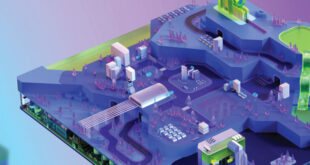The rise of indie studios has enabled long-running devs to revive classic franchises – albeit sometimes without the actual IP, often still retained by publishers. So while EA’s 2012 Syndicate reboot may have flopped, members of the original team are keen to revive the sci-fi hit in the form of Satellite Reign.
Billed as a spiritual successor to Syndicate Wars, the title is yet another Kickstarter success, having raised £461,333 back in 2013. At the time of writing, 5 Lives Studios is preparing for the August 28th release, with a stint on Early Access raising hopes for the full title.
“This is our first game as an indie studio,” said Brent Waller, environment artist. “The response so far on Early Access has been really positive, so we’re sure people will really enjoy it. We hope it does well for us, but for now, we’re trying to play it safe by keeping our expectations somewhat grounded.”
Given the team’s varying levels of experience with Unity on both personal projects, character artist Dean Ferguson says other engines “barely got more than a glance”. In fact, Unity was used for more than just the game’s development.
“All of our Kickstarter pitch cinematics and materials were created in Unity,” he reveals. “Usually something like that would have been created with pre-rendered cinematics. Unity allowed us a high quality end result without the time sink of rendering.”
The team also used the Asset Store and the work of other talented Unity developers to improve Satellite Reign.
Key assets included Candella SSR’s Screen Space Reflections and the Alloy Physical Based Rendering shaders, which were used to create the game’s rain-soaked cyberpunk streets. Others tools used include SECTR Complete, Final IK, DM Map, FavouritesTab Console Pro and Advanced Inspector.
“The Asset Store has been invaluable to us,” says animator Mitchell Clifford. “The amount of off-the-shelf scripts, effects and tools available is mind-boggling. We used many to help us achieve the gameplay and visuals we were aiming for.
“The man-hours and money saved by not having to develop these ourselves has been a life-saver for a small team like ours, and allowed us to create such a large game.”
5 Lives Studios also chose to upgrade the game to Unity 5, released earlier this year. While the bulk of the work was done using Unity 4, the latest iteration of the widely-used engine enabled the team to bring an extra level of quality and polish to the final product.
“The biggest lure for us for Unity 5 was the 64-bit editor,” says programmer Mike Diskett, who led the team behind the original Syndicate Wars. “We were starting to hit a wall with Unity 4 due to the size of our world, and the 64-bit editor for Unity 5 allowed us to load and have much more of the world in memory at one time.
“We also took advantage of Unity’s new cloth system to give all our agents dynamic cloth on their trenchcoats.”
Waller adds: “For us, the choice to move to Unity 5 was for performance. We were too late in development to take advantage of all the new rendering and lighting tech, as we had too many proprietary effects tied into Unity 4’s deferred lighting system.
“Thankfully, Unity 5 has a legacy rendering option, which allowed us to retain all our custom shaders and effects with minimal porting required for Unity 5. The whole process of moving from Unity 4 to 5 happened over the course of one weekend with just Mike working on it.”

 MCV/DEVELOP News, events, research and jobs from the games industry
MCV/DEVELOP News, events, research and jobs from the games industry



